Literary rating: ★★★½
Kick-butt quotient: ☆☆☆
“Fear not,” she retorted with animation, “that I will suffer the indignity of capture at their hands. My dead body they may find, but the spirit of the Rani of Jhansi will have carried more than one of them to an accounting before the great tribunal of justice.”

“With the exception of a white turban, she was attired in a blood-red uniform from head to foot.”
I’m surprised how sympathetic a portrayal this novel has of Queen Lachmi Bai (as it’s spelled here), considering when it was published. For this came out in 1901, a point at which India was still firmly under British rule – heck, Queen Victoria was on the throne as the year began. Yet Lachmi Bai is very much the heroine, portrayed respectfully, to an almost idealized degree. For instance, it begins with the rebel massacre of British troops and their families at Jhansi. Yet this is depicted as being in explicit defiance of her command to secure them as prisoners.
It’s a mix of historical fact and pure speculation, the latter being particularly evident in a fairly platonic love triangle between the Queen, and two of her (entirely fictitious, I suspect) lieutenants, the Hindu Prasad Singh and the Muslim Ahmad Khan. The latter is the villain of the piece. His blood-lust is responsible for the massacre, and he is depicted in phrases such as “the expression of his mouth and chin denoted cruelty and treachery—the latter, perhaps, an accomplishment rather than a failing to the Oriental mind.” [While there is an argument to be made here for Islamophobia in his depiction, given the highly positive way Lachmi Bai and Prasad are portrayed, accusations of general “racism” seem lazy]
However, even he spends much of the middle portion working faithfully in support of the queen’s mission to free her country from the British. Speaking of whom, there is one scene early in the book told from the point of view of the Empire. But thereafter, they are largely referred to as “the Foreigners,” again demonstrating the Indo-centric viewpoint of the novel. While they ultimately prevail, this is not reported with any sense of triumph. Indeed, White is remarkably prophetic, Lachmi Bai saying, almost with her final breath: “Not forever shall their horsemen ride triumphantly through the land. A day will come when their law shall be no longer obeyed, and our temples and palaces rise anew from their ruins.” 46 years later, India did indeed become an independent country.
“But even if defeat is again the will of God, if die we must; is it not better to perish as warriors should, in a feat of arms upon which the eyes of our enemies will gaze with marvel, than as wild beasts hunted through the jungle?”
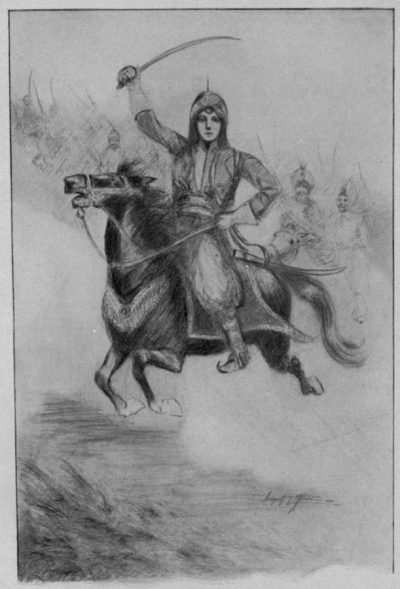
“Her horse leaped forward, straight for Sindhia’s guns.”
The story told here bypasses her entire life and marriage, joining proceedings after she has already become a widow. In the early stages, Lachmi Bai also takes a back seat, with the storyline revolving around Ahmad and Prasad’s rivalry. The former manipulates the latter into believing the Queen is having an affair with young officer Dost Ali, and also the Queen into believing Prasad is plotting against her. This leads to his exile for the middle of the book, until returning after the fall of Jhansi, as the Queen is making her escape from the city. Though I must say, Ahmad’s eventual fate is rather underwhelming, in a “Cersei Lannister” kind of way. Without getting too spoilery, hopes he would meet the point of Lachmi Bai’s sword proved unfulfilled.
The latter half focuses more on the Queen, as fate deals her cards both good and bad. It’s made clear the military reverses suffered are not her fault, or in any way reflect her bravery. Her commanders are to blame, along with a tendency for her forces to break under pressure. Yet, as the quote above says, she would rather have a glorious death than a subservient life. The comparisons to Jeanne D’Arc are understandable, and made explicit: “A second Jeanne D’Arc, as valiant in battle, more subtle in council than the Maid of Orleans, moved by the same passionate love for her country, had cast in their teeth a wager of defiance, to stand until either they were driven from her state, or she had perished.”
Of course, we know how the story ends, and White gives Lachmi Bai the heroic send-off she deserves: “She drew the folds of a shawl over her face to hide her death agony, and again lay down. The blackness of night grew deeper, the silence more intense. Presently, strange, warrior forms seemed to appear from the unknown and filled the Rani’s tent. One supremely beautiful figure, in dazzling raiment, came forth to enfold the dying woman in her arms.” It’s surprisingly touching, and a decent end to a story which has survived the passage of almost 120 years better than I expected
Author: Michael White
Publisher: J. F. Taylor & Company, available as an e-book for free from Project Gutenberg.





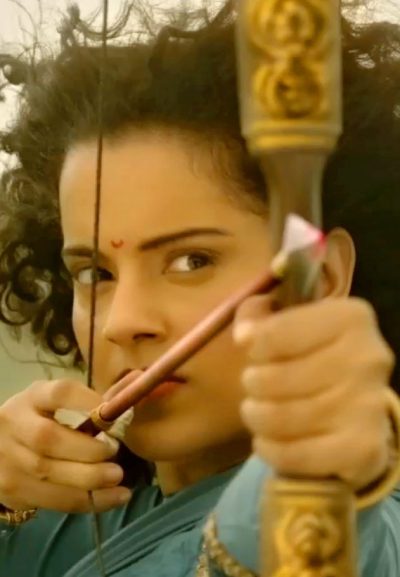 The movie opens with a particularly elaborate disclaimer, admitting that “certain cinematic liberties have been sought,” and that “this film does not claim historical authenticity.” Probably wise: Indians take their national heroes very seriously; just last year, another historical epic, Padmaavat,
The movie opens with a particularly elaborate disclaimer, admitting that “certain cinematic liberties have been sought,” and that “this film does not claim historical authenticity.” Probably wise: Indians take their national heroes very seriously; just last year, another historical epic, Padmaavat, 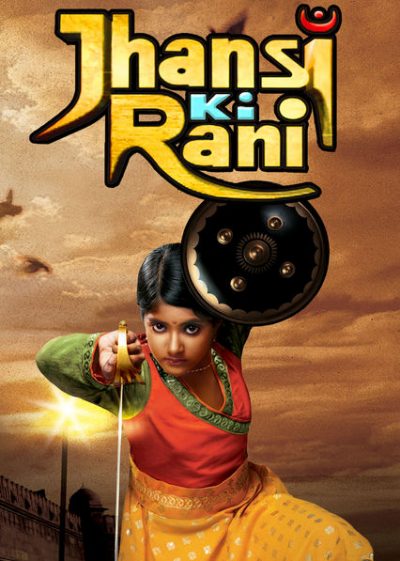 Not for the show, I should stress. But as a Brit… Wow, were were really such utter bastards to the Indians when the country was a colony? I was under the impression it was all tea and cricket. But the British, as depicted here, appear largely to be working entirely for the East Indian company, treating the local population with, at best, disdain, and often brutality. All the while, seeking to manipulate local politics (with, it must be said, the help of some Indians) to their own advantage. After 70 episodes of this, such is the guilt, I can barely enjoy my chicken tikka masala without giving it reparations.
Not for the show, I should stress. But as a Brit… Wow, were were really such utter bastards to the Indians when the country was a colony? I was under the impression it was all tea and cricket. But the British, as depicted here, appear largely to be working entirely for the East Indian company, treating the local population with, at best, disdain, and often brutality. All the while, seeking to manipulate local politics (with, it must be said, the help of some Indians) to their own advantage. After 70 episodes of this, such is the guilt, I can barely enjoy my chicken tikka masala without giving it reparations. The British – already unhappy with Manu’s rebellious outbursts – are far from happy at the prospect of her marrying Gangadhar and continuing the line. Even before she arrives at the palace, there are backroom conspiracies involving some of his relatives (not least his own mother), who ally themselves with the colonialists for their mutual benefit. These schemes go up to and include multiple assassination plots against the king, and indeed, his bride-to-be. Time for Kranti Guru to come out again, particularly to face off against gold-toothed British psychopath Marshall (Verma). His relentless pursuit, without regard for who gets hurt, earns him Manu’s undying enmity. [Weirdly, he’s played by an Indian actor in “white face”, as are some – but not all – of the other English officers, some of whom are dubbed.]
The British – already unhappy with Manu’s rebellious outbursts – are far from happy at the prospect of her marrying Gangadhar and continuing the line. Even before she arrives at the palace, there are backroom conspiracies involving some of his relatives (not least his own mother), who ally themselves with the colonialists for their mutual benefit. These schemes go up to and include multiple assassination plots against the king, and indeed, his bride-to-be. Time for Kranti Guru to come out again, particularly to face off against gold-toothed British psychopath Marshall (Verma). His relentless pursuit, without regard for who gets hurt, earns him Manu’s undying enmity. [Weirdly, he’s played by an Indian actor in “white face”, as are some – but not all – of the other English officers, some of whom are dubbed.]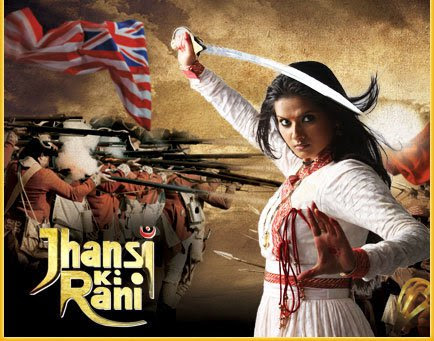 For the great majority of the time, it’s light stuff, with Manu escaping every pitfall her enemies set for her. Then, the hammer drops: to extend the GoT comparison, it’s the Rani equivalent of the Red Wedding. Fewer bodies, to be sure – just one – yet the resulting emotional wallop was still brutal, sending me through multiple stages of grief during the subsequent fall-out. “No… Surely they haven’t… It’s got to be a dream sequence.” All told, it was easily the most impactful death in any of the telenovelas I’ve watched, regardless of their origin, and the repercussions ran on for multiple episodes. As do the reaction shots. So. Many. Reaction. Shots.
For the great majority of the time, it’s light stuff, with Manu escaping every pitfall her enemies set for her. Then, the hammer drops: to extend the GoT comparison, it’s the Rani equivalent of the Red Wedding. Fewer bodies, to be sure – just one – yet the resulting emotional wallop was still brutal, sending me through multiple stages of grief during the subsequent fall-out. “No… Surely they haven’t… It’s got to be a dream sequence.” All told, it was easily the most impactful death in any of the telenovelas I’ve watched, regardless of their origin, and the repercussions ran on for multiple episodes. As do the reaction shots. So. Many. Reaction. Shots.
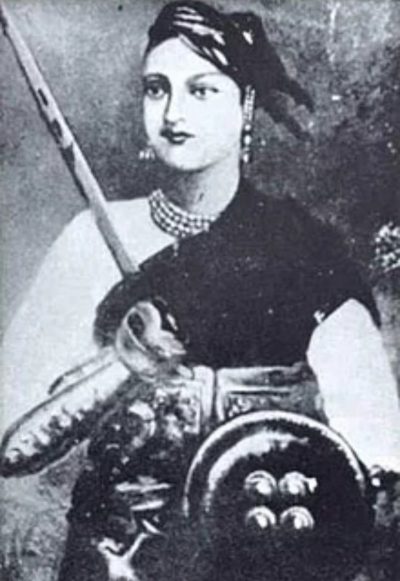 The notion of a warrior woman, who leads the fight against occupying forces is something which quite a common trope of legend and lore worldwide. The family tree includes the likes of
The notion of a warrior woman, who leads the fight against occupying forces is something which quite a common trope of legend and lore worldwide. The family tree includes the likes of  In June 1857, rebel soldiers seized the fort at Jhansi and massacred, not only the officers garrisoned there, but their families. After the rebels left, Lakshmibai took over, running Jhansi on behalf of the British until they could send a superintendent. That’s not exactly Joan of Arc-like… Instead, she fought off efforts by the rebels to claim the Jhansi throne for her husband’s nephew, as well as an attempted invasion by neighbouring states. It’s possible the latter enemy’s alliance with the British helped sour relations between them and Lakshmibai, though she still seems to have intended to act as a caretaker to this point.
In June 1857, rebel soldiers seized the fort at Jhansi and massacred, not only the officers garrisoned there, but their families. After the rebels left, Lakshmibai took over, running Jhansi on behalf of the British until they could send a superintendent. That’s not exactly Joan of Arc-like… Instead, she fought off efforts by the rebels to claim the Jhansi throne for her husband’s nephew, as well as an attempted invasion by neighbouring states. It’s possible the latter enemy’s alliance with the British helped sour relations between them and Lakshmibai, though she still seems to have intended to act as a caretaker to this point.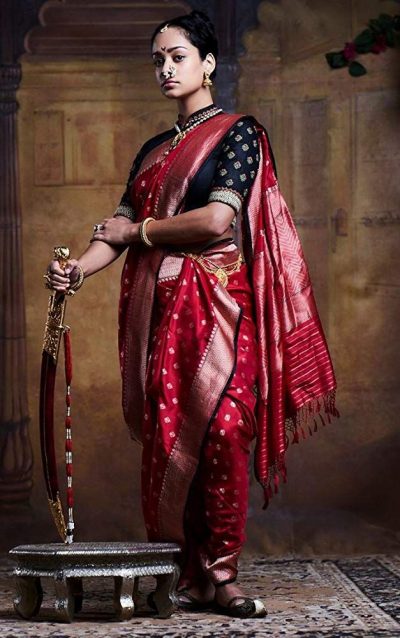 Her post-rebellion legacy was a complex one. Some English writers maligned Lakshmibai, blaming her for the massacre by the rebels at Jhansi – in particular army doctor, Thomas Lowe, who called the queen the “Jezebel of India.” However, Sir Hugh Rose, commander of the British forces who took Jhansi spoke of her in much kinder terms, calling her “Personable, clever and beautiful,” “The most dangerous of all Indian leaders,” and “The bravest and best military leader of the rebels”.
Her post-rebellion legacy was a complex one. Some English writers maligned Lakshmibai, blaming her for the massacre by the rebels at Jhansi – in particular army doctor, Thomas Lowe, who called the queen the “Jezebel of India.” However, Sir Hugh Rose, commander of the British forces who took Jhansi spoke of her in much kinder terms, calling her “Personable, clever and beautiful,” “The most dangerous of all Indian leaders,” and “The bravest and best military leader of the rebels”.